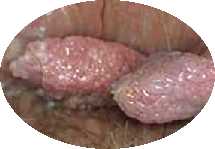Toolbox



CONTACT
|
For all comments and questions, please write to us at: [email protected] Please note that this email address is only for comments, questions, and cancellation of appointments.
For new appointment requests, please call our reception at 514 524 1001. |
CONTACT INFORMATIONS |
News • Blog
Blog
Videos
Welcome
Sexual health and LGBT population
Molluscum contagiosum
Living with HIV
Post-exposure prophylaxis (PEP)
PrEP
Toolbox
APPOINTMENTS
 |
| 1001, boul. De Maisonneuve Est, bureau 1130 Montréal Québec H2L 4P9 |
| 514 524 1001 |
| Walk-in Emergencies
Before a Visit
Cancel an appointment |
HPV stands for “human papillomavirus”.
The HPV family includes nearly 200 viruses that differ in their genetic composition. For this reason, we speak of HPV types.
About 40 HPV types can infect the genitals and the anus. Some of these viruses can also affect the mouth or throat.
HPV types 6 and 11 cause more than 90% of condylomas, also called genital warts. These types are considered low risk as they’re not typically linked to cancers.
HPV types 16 and 18 cause 77% of cervical cancers, 40% of vaginal and vulvar cancers and 90% of anal cancers. These types are considered high risk as they’re frequently linked to cancers.
Types 1 and 2 cause warts on the hands, but not on the genitals or the anus. Types 6, 11, 40, 42, 43, 44, 53, 54, 61, 72, 73 and 81cause genital warts in the shape of tiny cauliflowers. However, types 6 and 11 cause 95% of HPV-related condylomas. Types 16, 18, 31, 33, 35, 39, 45, 51, 52, 56, 58, 59 are 68 considered high risk for cervical cancer. Types 16 and 18 are the most dangerous, as they’re responsible for about 70% of cervical cancers, and they lead to cancer much faster than other high risk HPVs.
In one study, the American National Cancer Institute concluded that about 10% of women who were carriers of HPV type 16 or 18 developed an advanced premalignant growth on the cervix (CIN 3) within three years, versus only 4% for female carriers of any other type of HPV. In addition, 20% of carriers developed CIN 3 within ten years, versus 7% of women who carried any other type of HPV.
Worldwide, HPV is the most common sexually transmitted infection.
Young people are most affected, although all age groups can be at risk.
HPVs are transmitted through close contact, frequently with a person who is contagious but unaware that they carry the virus.
Vaginal and anal penetration are the most effective means of transmitting HPV.
HPV can spread through genital or anal contact between sexual partners.
The virus cannot be contracted from clothing, soap, bedding, toilet seats, and so on.
Once HPV is transmitted, the virus establishes a chronic infection in the cells.
A significant proportion of people infected show no symptoms.
The majority of those who contract HPV are chronically infected. Consequently, the period between infection and the appearance of symptoms can range from a few months to several decades.
Even without showing symptoms, the infected individual can transmit the virus to future children or sexual partners.
After visible symptoms have disappeared, no test is available to determine whether the virus remains in the body.
Most lesions are transitory, lasting several months to years.
Some occur more frequently, such as condylomas (see the “HPV and condylomas” section) and abnormal cells on the cervix (see the “HPV and the Pap test” section). Other lesions are less frequent but more serious, such as premalignant cells on the vulva, vagina or anus, as well as cancerous growths in these regions and in the mouth or throat.
 Condyloma
Condyloma
